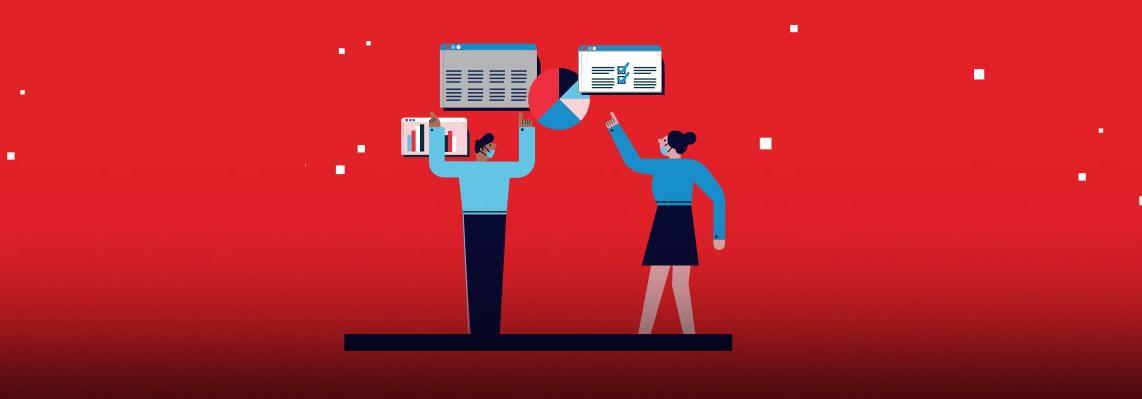Procurement professionals have been thrust into the spotlight by the COVID-19 pandemic. No longer focused on managing costs, procurement departments have been transformed into teams of strategic problem-solvers.
Peter Malpas, President for EMEA at RS, reflects on the findings of the fourth annual survey of the MRO sector conducted jointly by RS and the Chartered Institute of Procurement & Supply (CIPS), to assess what those changes mean to the procurement profession.
The pandemic has shaken and broken many of the everyday systems that organisations and individuals rely on. Some businesses watched as their sales flat-lined. Others found themselves buckling under the weight of an unprecedented spike in demand. Supply chains in particular bore the brunt of the disruption.
The common challenge facing people in either scenario was, how are we going to get through this? From ensuring remote working was a sustainable option to assessing premises requirements, from plugging holes in supplies figuring out how to avoid such disruption in the future, procurement has become hardwired into C-level decision making.
In our fourth annual survey of the state of maintenance, repair and operations (MRO) procurement, conducted in partnership with the Chartered Institute of Procurement & Supply (CIPS), half of procurement professionals in the UK said they felt the pandemic had elevated the importance of procurement within their organisation. This presents an interesting secondary challenge. If you have found your status elevated by the pandemic, how do you maintain your newly-found strategic importance?
One respondent, who wished to remain anonymous, told us: “Most of the working principles of procurement that I am aware of do not cover extraordinary situations like this.”
Time to step up
Interviewed earlier this year by RS, John Glen, the chief economic advisor to CIPS, outlined the changing situation: “A significant number of procurement people that I’ve spoken to are also responsible for managing their businesses, estates and properties,” he said.
One responsibility has been making the shift to remote working go smoothly, encompassing everything from footrests and supportive chairs in workers’ homes, to examining leases to find break-clauses or opportunities to reduce rentals.
Another has been re-examining the supply chain, filling gaps and making an honest assessment of its ongoing fitness-for-purpose. Businesses in the ecommerce sector, or those supplying it, have come to understand the saying ‘Be careful what you wish for’, as they have fought valiantly to keep up with demand.
In the midst of the pandemic, simple items like cardboard boxes became one of the hottest products around. Procurement teams have had to work hard to keep vitally important supplies coming in – without which, businesses might fail to keep up with orders and suffer as a consequence.
“The profession has risen to the challenge, finding new ways to keep the wheels of industry moving even when borders are closed and supply lines compromised.”Peter Malpas, President for EMEA, RS
Visibility still counts
Rapidly backfilling a supply chain can keep the wheels turning. But it’s not without risks. At a time when everyone was struggling to cope with a lack of transport from Asian manufacturing hubs, closures and lockdowns, as well as wildly fluctuating demand, it still pays to be careful.
When a business buys authorised products from authorised distributors, it is also buying confidence in the provenance and quality of those products. But during periods of strains and shortages, there is always a risk that inferior or unauthorised products will make their way into the supply chain.
Perhaps it’s no coincidence then, that 39% of those we surveyed said business continuity planning for critical parts was a strategic priority – second only to sustainable and ethical procurement.
The effects of inferior or counterfeit items can range from inconvenient to catastrophic, depending on the product or technology.
“The pandemic has meant procurement professionals are now engaging with a wider array of colleagues across their businesses.”Peter Malpas, President for EMEA, RS
Digital purchasing platforms are one of the most effective ways of ensuring there is as much transparency and visibility as possible built into supply chains. Even before the pandemic, more than 70% of all the business we transact was being done digitally.
As organisations look for ways to make supply chains more resilient − with new suppliers, for example − digital tools are likely to become even more important, thanks to that visibility factor.
Indeed, another finding from our research was that the pandemic has accelerated the adoption of purchase-to-pay technology. We fully expect to see that echoed in the increased use of eProcurement tools in the future.
But it isn’t just technology that is needed here. The pandemic has meant procurement professionals are now engaging with a wider array of colleagues across their businesses.
In many ways, that’s the key to ensuring that procurement holds on to its recently acquired strategic status. Crystal-clear, open and honest communications with all stakeholders is vital during a crisis, of course. But understanding who your suppliers’ suppliers are, developing procurement processes, ensuring compliance with them and being able to analyse all your procurement spending – this all needs to become the norm, and a part of everyday good procurement practice.
For in-depth data and analysis on how COVID-19 has changed the role of the procurement professional, download the 2020 Indirect Procurement Report here.





